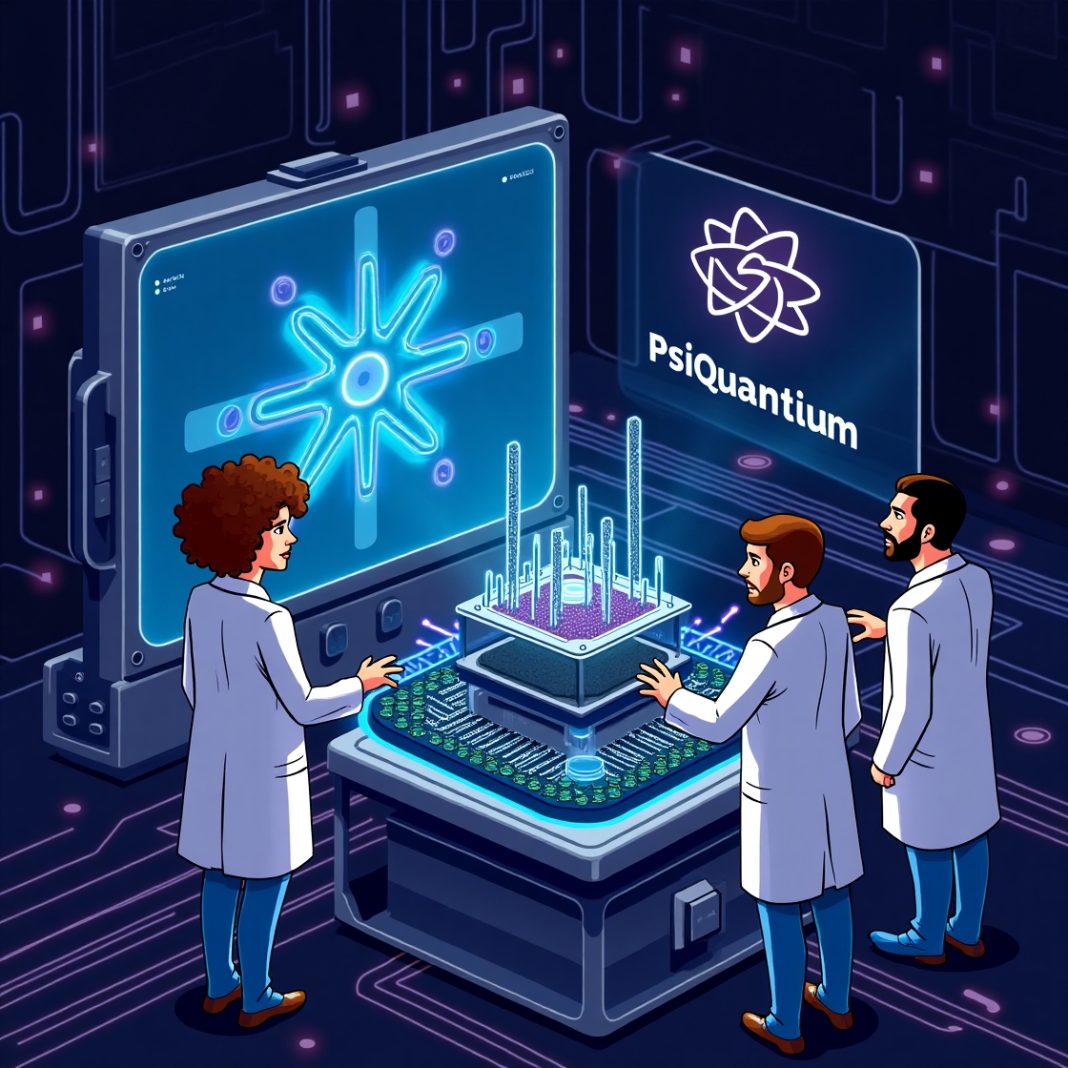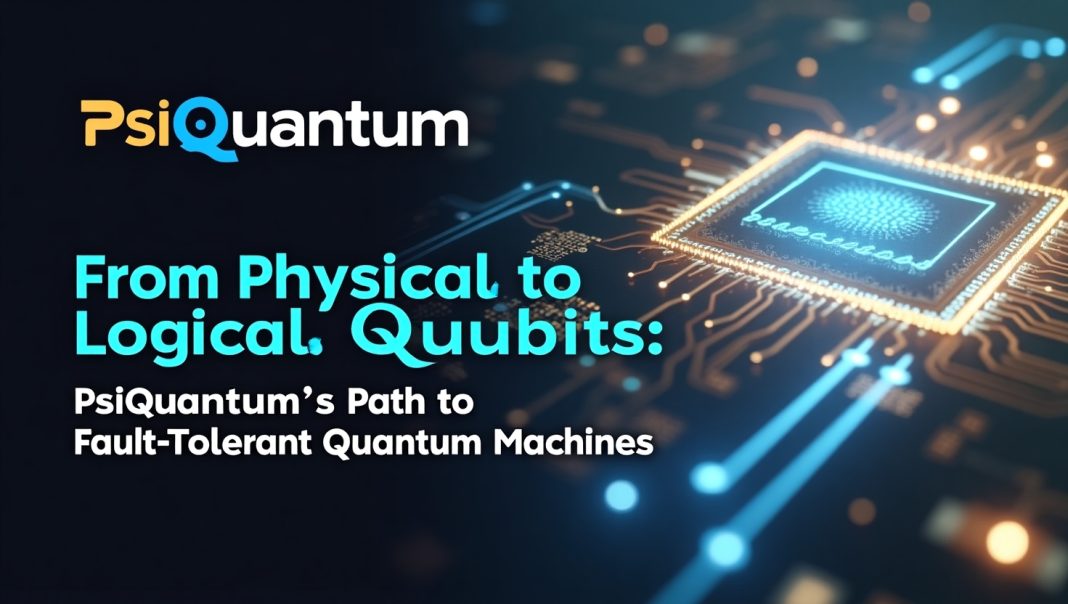Introduction: The Million-Qubit Challenge
Quantum computing promises to transform cryptography, chemistry, and AI. Yet, today’s devices run on just a few hundred fragile qubits. Scaling to one million qubits—enough for fault-tolerant computation—is the field’s biggest challenge. PsiQuantum, a California-based startup, believes the answer lies not in superconducting circuits or trapped ions but in photons.
What Are Photonic Qubits?
Photonic qubits use individual particles of light to encode quantum information. Instead of electrons in superconducting loops or ions in traps, PsiQuantum manipulates photons moving through optical circuits.
Key Features of Photonic Qubits
- Room-temperature operation: No ultra-cold dilution refrigerators required.
- Low interaction noise: Photons barely disturb each other, reducing decoherence.
- Natural networking: Light travels easily through optical fibers, ideal for distributed systems.
PsiQuantum’s Strategy: Mass Manufacturing Meets Quantum Tech
Most quantum systems are still hand-built in labs. PsiQuantum partners with GlobalFoundries and other semiconductor fabs to manufacture photonic chips using standard CMOS processes. This approach aims to mass-produce millions of photonic components—scaling physical qubits to support fault-tolerant logical qubits.
Three Pillars of PsiQuantum’s Roadmap
- Integrated photonic chips with high-quality photon sources and detectors.
- Surface-code error correction to turn fragile physical qubits into robust logical qubits.
- Modular architecture for assembling large-scale quantum systems from repeatable building blocks.
How Photonic Qubits Enable a Million-Qubit Machine
Because photons can be generated, routed, and measured in parallel, photonic architectures naturally suit the grid-like structures needed for surface codes. This reduces wiring complexity and makes it easier to scale up without exponentially increasing noise.
| Feature | Superconducting Qubits | Trapped Ions | Photonic Qubits (PsiQuantum) |
|---|---|---|---|
| Operating Temperature | Millikelvin | Cryogenic/Room | Room temperature |
| Interaction Noise | Moderate | Low | Very low |
| Scalability Approach | Larger chips | Modular traps | Mass-fabricated optical chips |
| Natural Networking | Difficult | Moderate | Easy (fiber optics) |
Real-World Example: Photon Sources at Scale
PsiQuantum’s chips integrate arrays of single-photon sources and ultra-fast detectors directly on silicon. By using existing foundry infrastructure, they aim to produce billions of identical optical components—the same way microprocessors scaled in the 1980s and 1990s.
Challenges Ahead
Photonic qubits are promising but not problem-free. PsiQuantum must still solve:
- High-fidelity photon generation to ensure indistinguishability.
- Low-loss optical routing across thousands of channels.
- Ultra-fast detectors for real-time error correction cycles.
Meeting these challenges will be essential to building a million-qubit system.
The Potential Impact
If PsiQuantum succeeds, its photonic quantum computer could:
- Revolutionize drug discovery by simulating complex molecules.
- Speed up AI training and optimization beyond classical limits.
- Enable global quantum networks using fiber-optic infrastructure.
Conclusion: Lighting the Path to Scalable Quantum Computing
Photonic qubits aren’t just a technical curiosity—they’re PsiQuantum’s blueprint for achieving the million-qubit milestone. By combining mass-manufactured optical chips with advanced error correction, the company could deliver the first truly fault-tolerant quantum computer. If successful, it would accelerate breakthroughs across science, security, and technology.
Related Reading
- Cooling Without AC: The Quantum Leap in Sustainable Building Materials.
- Breakthrough in Qubit Precision Could Shift Quantum Computing’s Future.
- Oxford’s Quantum Breakthrough: Qubit Leap Sets New Record.
FAQs
1. Why are photonic qubits less noisy than other qubits?
Photons rarely interact with each other, which minimizes cross-talk and decoherence.
2. How many physical qubits are needed for one logical qubit?
Thousands. Error correction spreads one logical qubit across many physical qubits to make it stable.
3. Why is mass manufacturing so important?
Fault-tolerant quantum computers need millions of qubits. Only semiconductor-style production can deliver that scale.
4. Could photonic qubits enable a quantum internet?
Yes. Photons already travel through fiber optics, making them ideal for secure, long-distance entanglement.
5. When might PsiQuantum’s million-qubit machine arrive?
The company hasn’t announced a date but targets the late 2020s or early 2030s for a large-scale system.




